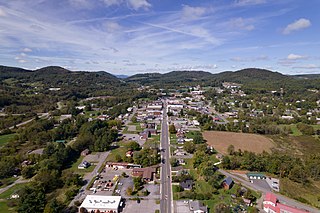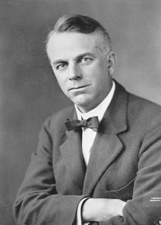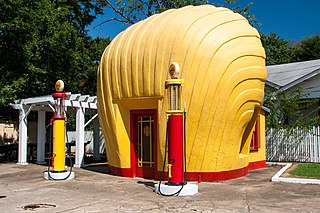
North Carolina is a state in the Southeastern region of the United States. It is bordered by Virginia to the north, the Atlantic Ocean to the east, South Carolina to the south, Georgia to the southwest, and Tennessee to the west. The state is the 28th-largest and 9th-most populous of the United States. Along with South Carolina, it makes up the Carolinas region of the East Coast. At the 2020 census, the state had a population of 10,439,388. Raleigh is the state's capital and Charlotte is its most populous city. The Charlotte metropolitan area, with an estimated population of 2,805,115 in 2023, is the most populous metropolitan area in North Carolina, the 22nd-most populous in the United States, and the largest banking center in the nation after New York City. The Research Triangle, with an estimated population of 2,368,947 in 2023, is the second-most populous combined metropolitan area in the state, 31st-most populous in the United States, and is home to the largest research park in the United States, Research Triangle Park.

The United States Capitol, often called the Capitol or the Capitol Building, is the seat of the United States Congress, the legislative branch of the federal government. It is located on Capitol Hill at the eastern end of the National Mall in Washington, D.C. Although no longer at the geographic center of the national capital, the U.S. Capitol forms the origin point for the street-numbering system of the district as well as its four quadrants.

Alleghany County is a county located in the U.S. state of North Carolina. As of the 2020 census, the population was 10,888. Its county seat is Sparta.

Sparta is a town in Alleghany County, North Carolina, United States. As of the 2020 census, the population of the town was 1,834. It is the county seat of Alleghany County.

The Teapot Dome scandal was a bribery scandal involving the administration of United States President Warren G. Harding from 1921 to 1923. Secretary of the Interior Albert Bacon Fall had leased Navy petroleum reserves at Teapot Dome in Wyoming, as well as two locations in California, to private oil companies at low rates without competitive bidding. The leases were the subject of an investigation by Senator Thomas J. Walsh. Convicted of accepting bribes from the oil companies, Fall became the first presidential cabinet member to go to prison, but no one was convicted of paying the bribes.

A teapot is a vessel used for steeping tea leaves or a herbal mix in boiling or near-boiling water, and for serving the resulting infusion which is called tea. It is one of the core components of teaware. Dry tea is available either in tea bags or as loose tea, in which case a tea infuser or tea strainer may be of some assistance, either to hold the leaves as they steep or to catch the leaves inside the teapot when the tea is poured. Teapots usually have an opening with a lid at their top, where the dry tea and hot water are added, a handle for holding by hand and a spout through which the tea is served. Some teapots have a strainer built-in on the inner edge of the spout. A small air hole in the lid is often created to stop the spout from dripping and splashing when tea is poured. In modern times, a thermally insulating cover called a tea cosy may be used to enhance the steeping process or to prevent the contents of the teapot from cooling too rapidly.

William Squire Kenyon was a United States senator from Iowa, and a United States circuit judge of the United States Court of Appeals for the Eighth Circuit.

The South Carolina State House is the building housing the government of the U.S. state of South Carolina, which includes the South Carolina General Assembly and the offices of the Governor and Lieutenant Governor of South Carolina. Located in the capital city of Columbia near the corner of Gervais and Assembly Streets, the building also housed the Supreme Court until 1971.

The United States Capitol Visitor Center (CVC) is a large underground addition to the United States Capitol complex which serves as a gathering point for up to 4,000 tourists and an expansion space for the U.S. Congress. It is located below the East Front of the Capitol and its plaza, between the Capitol building and 1st Street East. The complex contains 580,000 square feet (54,000 m2) of space below ground on three floors. The overall project's budget was $621 million.

The Teapot Dome Service Station is a former gas station built in the shape of a teapot located in Zillah, Washington, United States, that is listed on the National Register of Historic Places.

The Shell Service Station in Winston-Salem, North Carolina, is a former filling station constructed in 1930 following a decision in the 1920s by the new local Shell distributor, Quality Oil Company, to bring brand awareness to the market in Winston-Salem. The building is an example of representational or novelty architecture and was listed on the National Register of Historic Places on May 13, 1976. It is located in the Waughtown-Belview Historic District at the corner of Sprague and Peachtree Streets.

John Axel Prip, also known as Jack Prip (1922–2009), was an American master metalsmith, industrial designer, and educator. He was known for setting standards of excellence in American metalsmithing. His works and designs have become famous for bringing together the formal, technical tradition of Danish design into harmony with the American desire for innovation. Several of his designs for the Reed and Barton Company are still in production today.
Ellen M. Wieske is an American artist, metalsmith, goldsmith, curator, educator, author, and an arts administrator. She is the deputy director of the Haystack Mountain School of Crafts. Wieske is known for her wirework pieces.

Sergei Isupov is a ceramic artist born in Stavropol, Russia, now living in Cummington, Massachusetts, United States, and Tallinn, Estonia. He was educated at the Ukrainian State Art School in Kiev and went on to graduate in 1990 from the Art Institute of Tallinn in Estonia with Bachelor of Arts and Master of Fine Arts degrees in ceramic art. He has since exhibited widely in both solo and group exhibitions, received numerous awards, and widely collected by museums and private collectors.

The Louis Round Wilson Library is a library at the University of North Carolina at Chapel Hill. Completed in 1929, it served as the university's main library until 1984. Today, it houses several special collections. The dome rises 85 feet over the university's South Quadrangle.

The presidency of Calvin Coolidge began on August 2, 1923, when Calvin Coolidge became the 30th president of the United States upon the sudden death of Warren G. Harding, and ended on March 4, 1929.

Beth Katleman is an American artist known for porcelain assemblage sculpture cast from found objects. Her allegorical installations fall within the genre of pop surrealism, combining decorative elements, such as Rococo embellishments and 19th century Toile de Jouy wallpaper scenery, with satirical references to consumer culture, fairy tales and classic literature. Katleman's work is in private and institutional collections and is exhibited internationally, including an installation commissioned by architect Peter Marino for Christian Dior, in the Hong Kong and London flagship boutiques. She lives and works in Brooklyn, New York, and is the recipient of the 2011 Moët Hennessey Prize, a Mid-Atlantic Arts Foundation grant, the Watershed Generation X Award, a Kohler Arts/Industry Fellowship and a residency in Cortona, Italy sponsored by the University of Georgia, Athens. Katleman holds a BA in English from Stanford University, an MFA from Cranbrook Academy of Art and an MBA in Arts Management from UCLA.

Ron Meyers is an American studio potter and ceramics teacher known for producing functional pottery featuring animal and human forms. His work is featured in numerous museums and notable collections, including the Smithsonian American Art Museum, the Georgia Museum of Art, and the Rosenfield Collection, and he has presented more than 100 workshops in the US and internationally. He has been described as "one of his generation's most important potters" and "an icon of the American ceramics community."
Billie Jean Theide is an American sculptor and goldsmith.
A teapot is a vessel for brewing or serving tea.
















